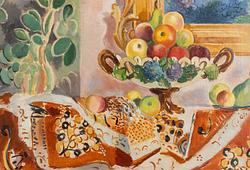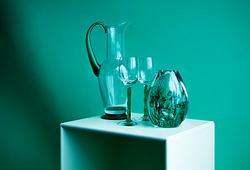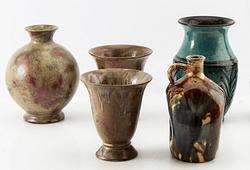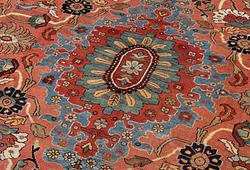Pablo Picasso
"Nu assis, de profil"
Lithograph, 1947, on Arches paper, signed in pencil and numbered 18/50. L. 45,5 x 60 cm. S. 50 x 65,5 cm.
Provenance
Joakim von Ditmar Gallery, New York.
Exhibitions
"Palm Beach! America's internationa Fine Art and Antique Fair", February 4-13, 2005.
"9e Pavillon des Antiquaires et Beaux-Arts Jardin de Tuileries", Paris, April 2-10, 2005.
Literature
Bloch 454. Mourlot 103.
More information
Karaktäristiskt för Picassos grafiska produktion är att den periodvis fokuserar på en särskild teknik. Det tidiga 1900-talet fram till 1930- och 40-talen domineras av torrnålsgravyrer och etsningar, endast ett fåtal litografier utförs under dessa decennier. Från 1945 sker en tydlig övergång till det litografiska mediet. Några av konstnärens mest kända och viktiga litografier tillkommer under andra delen av 40-talet och under 50-talet.
Merparten av Picassos litografier trycktes hos Fernand Mourlot, och mästerlitografens första möte med konstnären beskrivs på följande sätt i den kände tryckarens memoarer:
"- Ni är Mourlot?
- Javisst, jag är Mourlot och känner mig hedrad att få träffa er, herr Picasso.
- Inget herr!
Vi börjar prata:
- Ni är alltså tryckare?
- Ja, litograf.
- Jag har hört talas om er genom Braque. Jag har sett vad ni gör. Då fick jag lust att lära känna er och kanske arbeta tillsammans med er. Fast det beror ju på."
Picasso och Mourlot fann lyckligtvis varandra och resultatet av deras samarbete blev några av Picassos idag mest eftersökta litografier.
"Nu assis, de profil" från 1947 hör till dessa utsökta tidiga litografier. Den sköna sittande kvinnan förmedlar en sällsynt känsla av lätthet och volym. De tunna konturlinjerna och kvinnans förfinade anletsdrag för tankarna till Matisses genialt förenklade modeller, dock råder det ingen tvekan om att mästaren till denna litografi är Picasso. Något av konstnärens självsäkra och självklara förhållande till det konstnärliga skapandet återspeglas i den gracila, kontemplativa kvinnobilden.
Designer
Pablo Picasso (1881-1973), Spanish painter, printmaker, sculptor, and ceramist. Active in France since 1900. He is, alongside Matisse, the most dominant artist of the 20th century. After passing through a blue period, a pink period with circus scenes and harlequins, he created his first cubist painting, "Les Demoiselles d'Avignon," in 1907 under the influence of African sculptures. Together with Braque, he further developed cubism by breaking down surfaces, which were then represented in various simultaneous aspects. In 1912, he left nature and recreated a new reality, only to return to acrobats in 1916. During the 1920s, he approached surrealism and worked with whimsical forms while also producing drawings and etchings in line style. During the Spanish Civil War, he was violently stirred, and it is now that his great protest in the painting Guernica comes to fruition. In the late 1940s, he settled by the Mediterranean and produced nymphs, centaurs, and fauns, as well as paraphrases of the works of old masters, and painted powerful terracotta ceramics in Vallauris. His abundant graphic production follows the same development as his painting.
Pablo Picasso was not only an artist but also a skilled ceramist. During his lifetime, he created hundreds of ceramic works, such as jugs, vases, and plates. Picasso's passion for ceramics began when he visited the annual ceramics exhibition in Vallauris in southern France in 1946 and was introduced to the craft by the artist couple Suzanne and Georges Ramié, who owned the Madoura pottery. During the following years which he spent in Vallauris, Picasso met his second wife, Jacqueline Roque, whom he depicted on the ceramic pieces. He also decorated the ceramics with abstract animals and bullfighters in a cubist style.
Read more




















